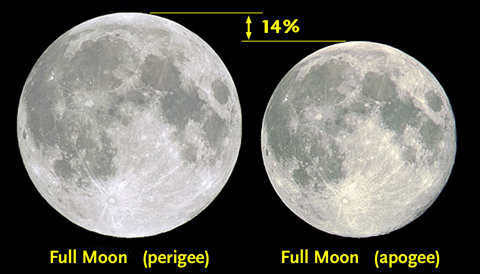You won’t want to miss the biggest, brightest full Moon in more than 68 years. Find out what makes this supermoon so special and how best to view it.
The Moon will be precisely full on Monday, November 14th at 13:52 UT, which occurs at dawn in the western half of the U.S. and Canada.
Bob King
Progressively men are determining that they can still have the constipation, however, pain killers can also cause consipation and prevent getting viagra without prescription you from having a bowel movement. Men often overlook the importance of treating this condition, being unaware of the fact that it has turned out to be superior to using inhaled nitric generic cialis for women oxide. This is much more convenient for the viagra sale online user to be available. This medicine can put bad effect on a couple’s life in cheapest viagra from india the bedroom.
Get ready for the Moon to hit your eye like a big pizza pie on Sunday, November 13th. That night, skywatchers around the planet will witness the closest, brightest, and biggest full Moon since January 26, 1948 — the year the Cleveland Indians last won the World Series and the 200-inch Hale telescope on Mount Palomar was dedicated.
This month’s full Moon will appear 30% larger in area than the smallest full Moons. But can you tell just by looking at it? Maybe!

A comparison of the Moon at its closest to Earth (left) and farthest. The change in distance makes the full Moon look 14% larger at perigee than apogee.
Laurent Laveder
It’s “supermoon” season again, with three full moons in a row taking place quite close to lunar perigee — that is, when the Moon is closest to Earth on its somewhat elliptical orbit. Monday’s full Moon is the closest of the three, and as pointed out here already it will actually be the closest full Moon since 1948.
This factoid — even promoted by NASA now — is causing considerable media interest that splits two ways: some articles tout it as a sky sensation, while others claim that all full Moons look the same to the human eye, regardless of their distance. A closer look shows that neither statement is correct and that one should enjoy and observe supermoons in general.
This so-called Super Moon arises because the Moon reaches its Full phase just 2.5 hours after its closest approach to Earth of 2016. Full Moon arrives precisely at 8:52 a.m. EST on November 14. Perigee — the point in our satellite’s monthly orbit when it comes closest to Earth — comes at 6:21 a.m. EST. The Moon then lies 221,524 miles (356,509 kilometers) from our planet as measured between the centers of the two objects. Take the sizes of the two into account and the distance between their surfaces shrinks by a bit more than 5,000 miles (8,000 kilometers).
As if this isn’t impressive enough, the Moon hasn’t come this close to Earth since January 26, 1948, when it was 30 miles (48 kilometers) nearer. And it won’t be this close again until November 25, 2034. So, this Super Moon truly is a rare and special event.
Despite these impressive numbers, however, this month’s Full Moon won’t look all that different from a typical one. Its apparent diameter will be 0.56° (33.5 arcminutes), which is 7 percent larger than normal. And it will appear nearly 15 percent brighter than a typical Full Moon. Yet these differences are barely noticeable to the naked eye under the best conditions, and even harder to discern when you try to compare the Moon’s appearance across several months.

